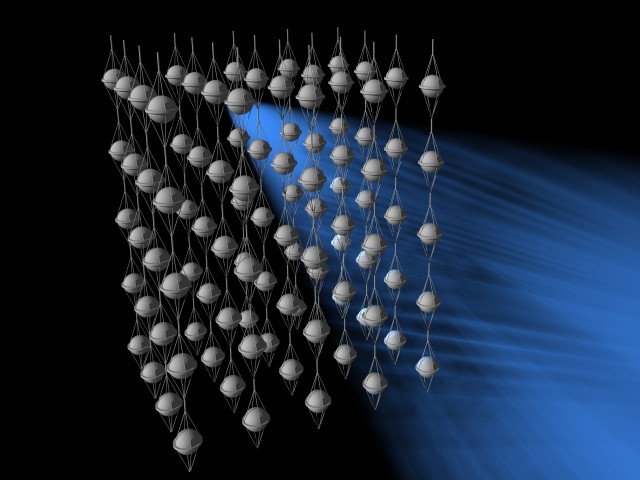[/caption]
The antineutrino (or anti-neutrino) is a lepton, an antimatter particle, the counterpart to the neutrino.
Actually, there are three distinct antineutrinos, called types, or flavors: electron antineutrino (symbol ̅νe), muon antineutrino (symbol ̅νμ), and tau antineutrino (symbol ̅ντ).
Beta Decay which produces electrons also produces (electron) antineutrinos. Wolfgang Pauli proposed the existence of these particles, in 1930, to ensure that beta decay conserved energy (the electrons in beta decay have a continuum of energies) and momentum (the momentum of the electron and recoil nucleus – in beta decay – do not add up to zero); Enrico Fermi – who developed the first theory of beta decay – coined the word ‘neutrino’, in 1934 (it’s actually a pun, in Italian!). It would be a quarter of a century before the (electron) antineutrino was confirmed, via direct detection (Cowan and Reines did the experiment, in 1956, and later got a Nobel Prize for it).
Another Nobel Prize – for Leon Lederman, Melvin Schwartz, and Jack Steinberger, in 1988 – came from experimental work in the 1960s which showed that muon antineutrinos are not the same as electron antineutrinos.
And in 2002, Davis and Koshiba shared the Nobel Prize (with Giacconi, for work in x-ray astronomy) for their detection of cosmic antineutrinos (a 40-year task!), which lead to the discovery of flavor oscillations (in which an antineutrino of one kind changes into another – electron antineutrino to muon antineutrino, for example).
Are neutrinos their own antiparticles? No … but perhaps there is an as yet undiscovered kind of neutrino that is (called a Majorana neutrino)? So β– (electron) decay produces antineutrinos (lepton number is conserved: 1 + (-1) = 0), and β+ (positron) decay produces neutrinos.
No Guide to Space article would be complete without some ‘Further Reading’, would it? KamLAND (the Kamioka Liquid-scintillator Anti-Neutrino Detector) is a wonderful place to start! For one of the greatest physics detective stories of the 20th century, check out my idol John Bahcall’s webpage. Applied Antineutrino Physics (Lawrence Livermore National Laboratory) – great stuff there too.
You won’t find ‘antineutrino’ in many Universe Today articles … but you’ll find plenty on neutrinos! That’s OK … remember that it’s very common to use the word ‘neutrino’ in a generic sense, one that includes the meaning ‘antineutrino’. Some examples: Neutrino Evidence Confirms Big Bang Predictions , Seeing Inside the Earth with Neutrinos, and Do Advanced Civilizations Communicate with Neutrinos?
Two Astronomy Cast episodes give you more insight into the antineutrino, Antimatter, and The Search for Neutrinos.
Sources:
Stanford University KamLAND
Wikipedia

